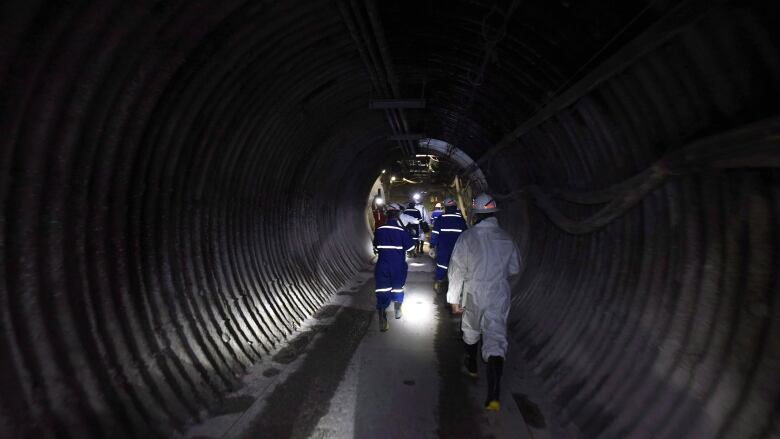Representative says Sask. mining sector not doomed after 'significant' Cameco layoffs
Saskatchewan Mining Association argues problems isolated to uranium market

A representative for Saskatchewan's mining sector says the industry is alive and well in the province, despite hundreds of layoffs.
Schwann argues that the issues that led to the indefinite shutdownof the company's Key Lake and McArthur River uranium mine site are specific to the global uranium market.
"There's just a surplus of uranium on the market and it's cheaper for Cameco to purchase and draw down that existing inventory than it is for them to mine a world class deposit at reduced value," Schwann explained. "The Cigar Lake mine is the highest grade uranium mine in the world, so it's not like mining is leaving the province.
"Mining is still a really significant employer of people on a primary, direct basis but also indirect, supplier as well."
Some of the employees had already been laid off in November when the company suspended production at the two sites. The closures were expected to last 10 months, but CEO Tim Gitzel said the business situation has not improved.
"At some point, the price will rise high enough to where it's going to make more sense for them to bring McArthur River back into production, then continue buying," said Nick Carter, an analyst for a uranium consulting company.
"I think it's just a matter of time its a bit of a waiting game for them until the price recovers."
Schwann said over 1,000 people are still employed in uranium in northern Saskatchewan and Cameco's head office in Saskatoon
On a broader basis, she said about 10,000 people are directly employed by the province's mining industry, with about 20,000 in supporting fields.
Schwann expects growth when it comes to metallic minerals. There is one gold mine in northern Saskatchewan and active explorationfor additional deposits ongoing.
The latest on potash
Saskatchewan still has the world's largest potash mining sector and Schwann said there has been an uptake in potash prices.
According to a recent provincial economic forecast from TD, that might not last.
"Offsetting the economic support from energy production will likely be a reduction in uranium production and low prices for potash, natural gas and other key mineral exports," the June report reads.
TD suggests that mining activity will gain renewed traction in 2019, edging growth up by 1.8 per cent.
Changes to power production
The province's power is primarily produced bythermal coal mined in southern Saskatchewan.
New federal regulations require that coal power generating stations be phasedout, unless carbon capture and sequestration is used to reduce greenhouse gas emissions.
Schwann said the SMA is watching to see what alternatives to coal will be used.
"We need to find another viable alternative to providing baseload power in the province," she said.
Tariff questions
Canada suppliesabout 20 per cent of the uranium that enters the U.S., with the rest coming from Kazakhstan and Russia. Schwann said the American government is doing a security review of these countries. There is also a desire for the U.S. to enhance its own uranium production.
"We're hopeful that they see Canada as a reliable, safe, trading partner and that Canada will be unaffected by any tariffs," said Schwann. "Hopefully they will also see our long term, positive trading relationship as something they would want to expand."












_(720p).jpg)


 OFFICIAL HD MUSIC VIDEO.jpg)
.jpg)



























































































